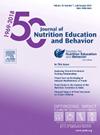决定营养安全关键结构的元人种志
IF 2.3
3区 医学
Q2 EDUCATION, SCIENTIFIC DISCIPLINES
引用次数: 0
摘要
目的对相关定性研究进行考察和专题分析,建立营养安全概念框架。按照元人种志的7步流程,我们筛选了6831项研究,并纳入了与营养安全相关的合格论文。SettingUS-based研究。参与者:对58篇定性论文的2709名参与者进行了综述。利益营养保障现象。InterventionNot适用。两名研究人员独立阅读并从每篇论文中提取数据。然后将这些信息结合起来,2名调查人员生成主题,以确定营养安全的关键结构。然后将构念组合成一个概念模型。结果最终的概念框架包括营养安全的2个主要构念(环境环境和社会心理功能)、16个次要构念和51个第三构念。结论和意义这是第一个关注营养安全而非粮食安全相关概念的元民族志。我们的研究结果与现有的粮食安全框架(包括粮食安全的六大支柱和粮食获取的五大领域)存在重叠之处。对营养安全的进一步了解和拟议建立的概念框架将有助于指导制定改进的营养安全措施和干预措施,以改善饮食质量和整体健康。本文章由计算机程序翻译,如有差异,请以英文原文为准。
A Meta-Ethnography to Determine Critical Constructs of Nutrition Security
Objective
This meta-ethnography aimed to examine and thematically analyze relevant qualitative studies to create a nutrition security conceptual framework.
Design
Following the 7-step process for a meta-ethnography, we screened 6,831 studies and included eligible papers relating to nutrition security.
Setting
US-based studies.
Participants
2,709 participants in 58 qualitative papers reviewed.
Phenomenon of Interest
Nutrition security.
Intervention
Not applicable.
Analysis
Two researchers independently read and extracted data from each paper. This information was then combined, and 2 investigators generated themes to determine critical constructs of nutrition security. Constructs were then combined into a conceptual model.
Results
The final conceptual framework includes 2 primary constructs (environmental circumstances and psychosocial functioning), 16 secondary constructs, and 51 tertiary constructs of nutrition security.
Conclusions and Implications
This is the first meta-ethnography to focus on concepts related to nutrition security rather than food security. There is an overlap between our findings and the existing framework for food security, including the 6 pillars of food security and the 5 domains of food access. An improved understanding of nutrition security and the proposed conceptual framework established will help guide the development of improved nutrition security measures and interventions to improve diet quality and overall health.
求助全文
通过发布文献求助,成功后即可免费获取论文全文。
去求助
来源期刊
CiteScore
4.20
自引率
11.50%
发文量
379
审稿时长
44 days
期刊介绍:
The Journal of Nutrition Education and Behavior (JNEB), the official journal of the Society for Nutrition Education and Behavior, is a refereed, scientific periodical that serves as a global resource for all professionals with an interest in nutrition education; nutrition and physical activity behavior theories and intervention outcomes; complementary and alternative medicine related to nutrition behaviors; food environment; food, nutrition, and physical activity communication strategies including technology; nutrition-related economics; food safety education; and scholarship of learning related to these areas.
The purpose of JNEB is to document and disseminate original research and emerging issues and practices relevant to these areas worldwide. The Journal of Nutrition Education and Behavior welcomes evidence-based manuscripts that provide new insights and useful findings related to nutrition education research, practice and policy. The content areas of JNEB reflect the diverse interests in nutrition and physical activity related to public health, nutritional sciences, education, behavioral economics, family and consumer sciences, and eHealth, including the interests of community-based nutrition-practitioners. As the Society''s official journal, JNEB also includes policy statements, issue perspectives, position papers, and member communications.

 求助内容:
求助内容: 应助结果提醒方式:
应助结果提醒方式:


